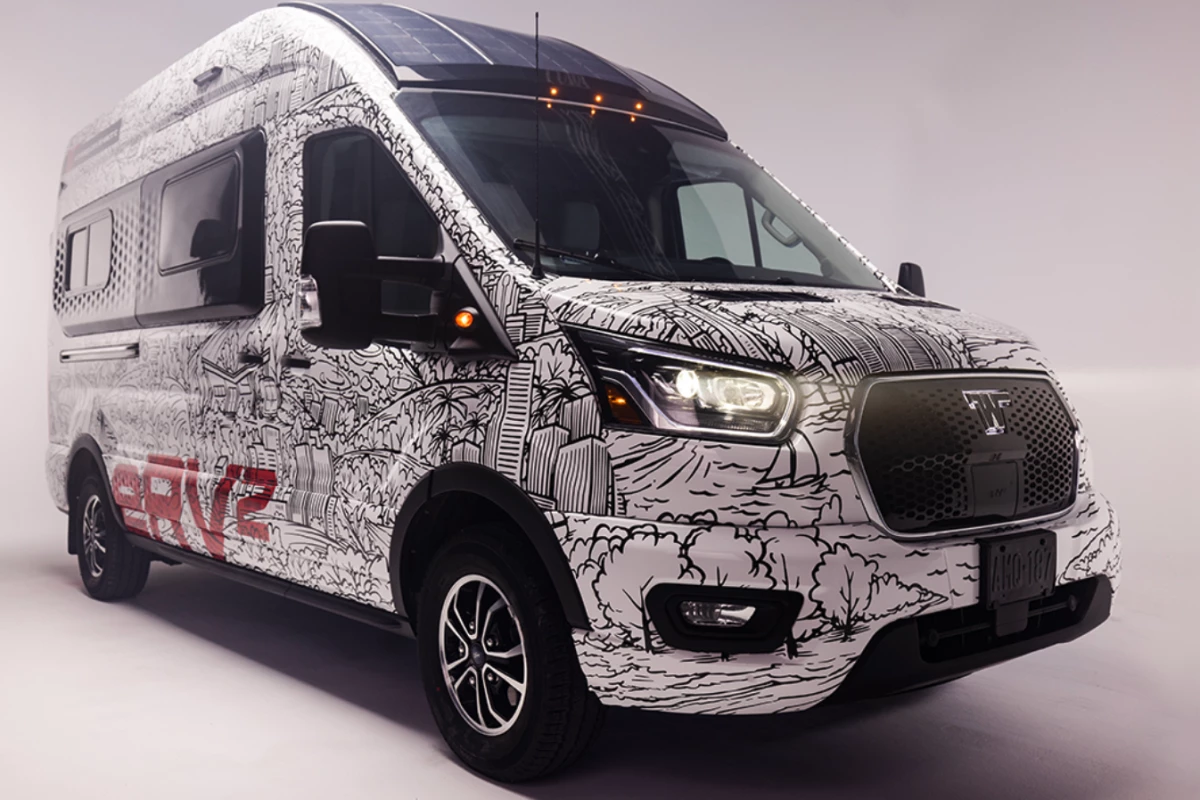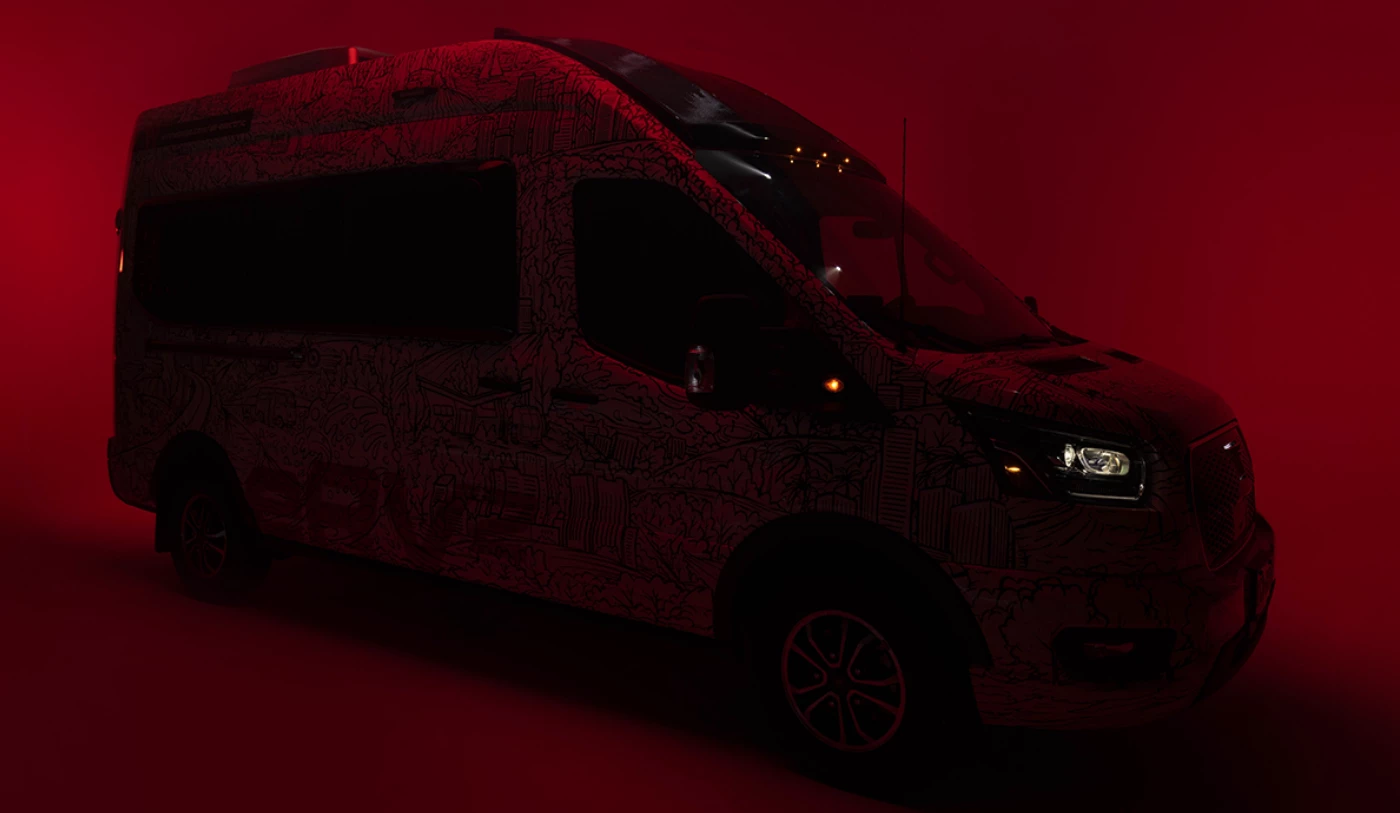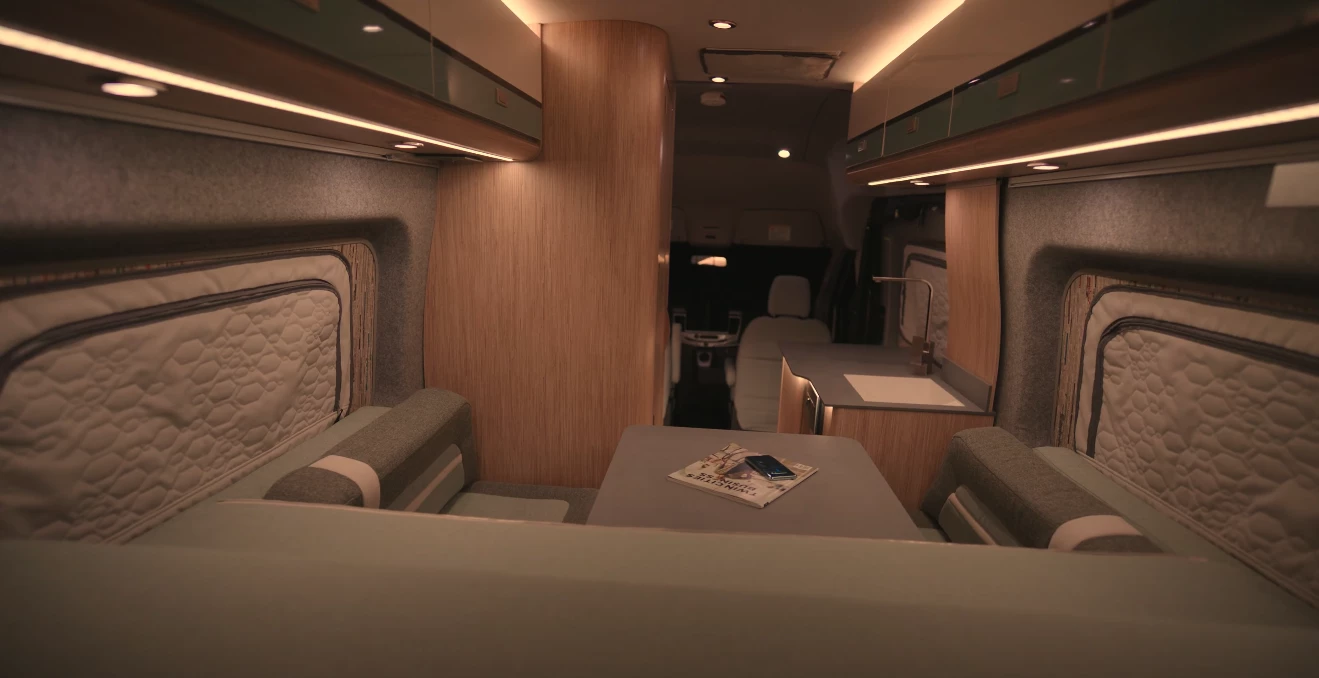The official eRV2 debut won't come until tomorrow at the Florida RV SuperShow, but Winnebago has broken out of the gates a little early in detailing the all-new electric camper van ahead of the show. As expected, Winnebago's second e-camper van prototype switches over to a factory Ford E-Transit chassis. With just over 100 miles of range, the camper van will be better-suited to local micro adventures than boundless expeditions, but Winnebago is exploring various range-extending solutions to ensure its first electrified motorhome delivers the performance that RVers expect.
As its name makes clear, the eRV2 is a further evolution of last year's eRV prototype. In many ways, though, it's a brand-new vehicle, trading out the electrified Transit chassis from Lightning eMotors for an E-Transit straight from the Ford factory. That switch actually comes with a range loss as the high-roof E-Transit that serves as the base for the eRV2 comes with a very modest 108-mile (174-km) estimated range, not particularly promising for trips more ambitious than a quick visit to the local national forest or state park.
The original eRV came stamped with a slightly better 125-mile (201-km) range, though that limit didn't stop Winnebago from taking it on a 1,400-mile (2,250-km) cross-country road trip. Winnebago says that it's actively pursuing range extension options for a commercial eRV, but it doesn't specify the technologies in which it's most interested. We've seen other major RV manufacturers exploring everything from rotary engine generators to hydrogen fuel cells in recent years, aiming to augment the low ranges that currently hamper fully electric motorhomes.
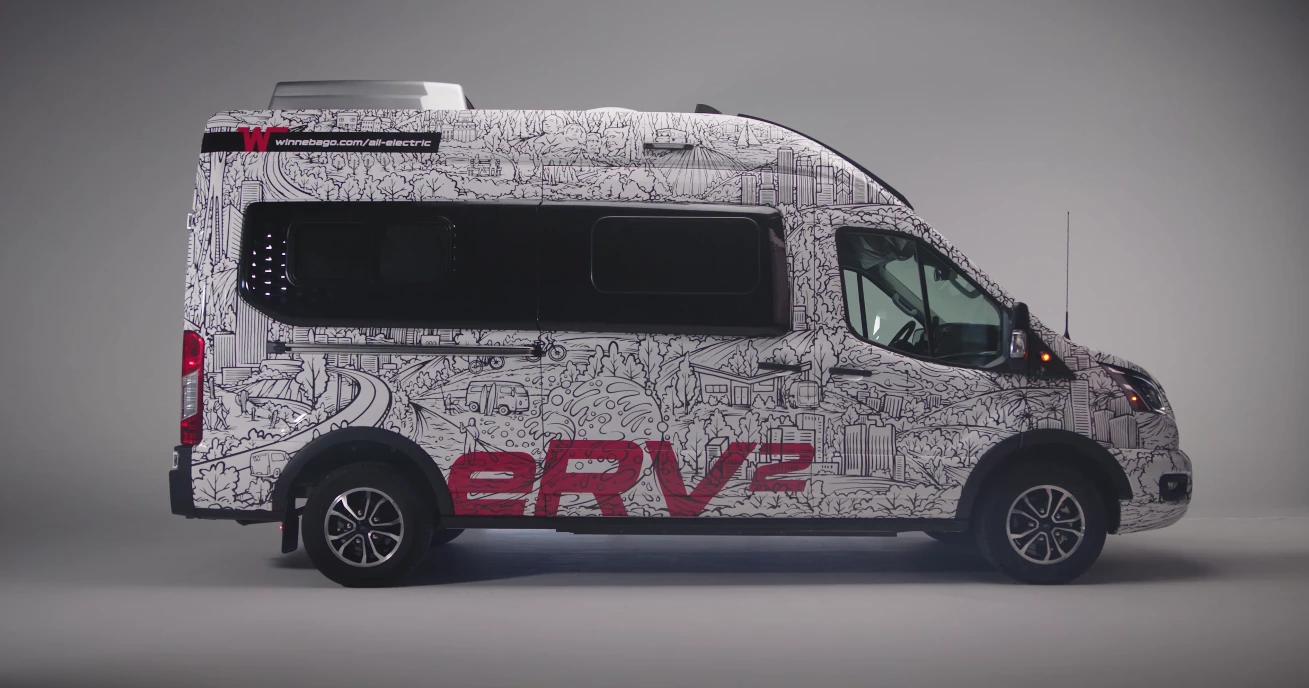
"Our primary goal in building the eRV2 was to help people comfortably explore the world around them with less environmental impact," says Huw Bower, Winnebago president. "The user experience was at the heart of this prototype’s development, through the early days of market research and even now as it goes through field testing."
The eRV2 won't merely commute to the campsite under pure-electric power, but it will continue running battery-only at camp. The new prototype relies on a proprietary "IonBlade" lithium house battery to power all onboard camper equipment. Winnebago collaborated with Lithionics Battery to create the thin-bodied 15-kWh 48-V lithium battery, which is housed below the van floor. A 900-W solar array helps keep the battery running while parked at camp, and Winnebago estimates that the eRV2 can run its electric camp for up to seven days of off-grid boondocking.
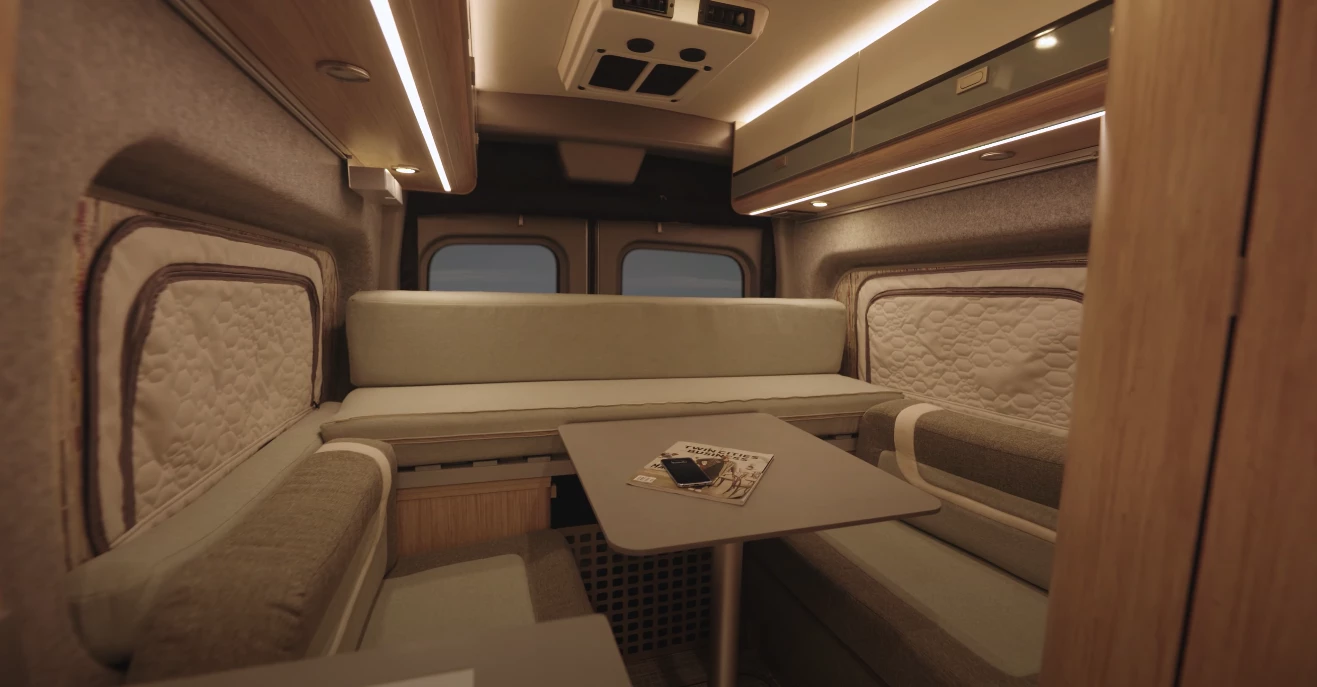
Winnebago promises to carry the eRV2's smart, cutting edge design into the interior with an adaptable layout honed for the modern work/live-on-the-road nomadic professional. The cabin features a 5-in-1 multipurpose lounge/sleep area, two adaptable workspaces with built-in charging ports, and a high-speed Wi-Fi router. The Winnebago Connect system offers smart home-like monitoring and control from a command screen inside the eRV2 and an accompanying app.
Winnebago says that the interior design is guided by modern Japandi principles, representing a fusion of Japanese and Scandinavian design philosophies. This sounds perfectly on-trend, as RV manufacturers have been incorporating Scandinavian-inspired design to great effect recently, and Japan micro-RVs have been fascinating the world with their incredibly efficient use of space. Winnebago also promises an emphasis on recycled, plant-based and biodegradable materials.
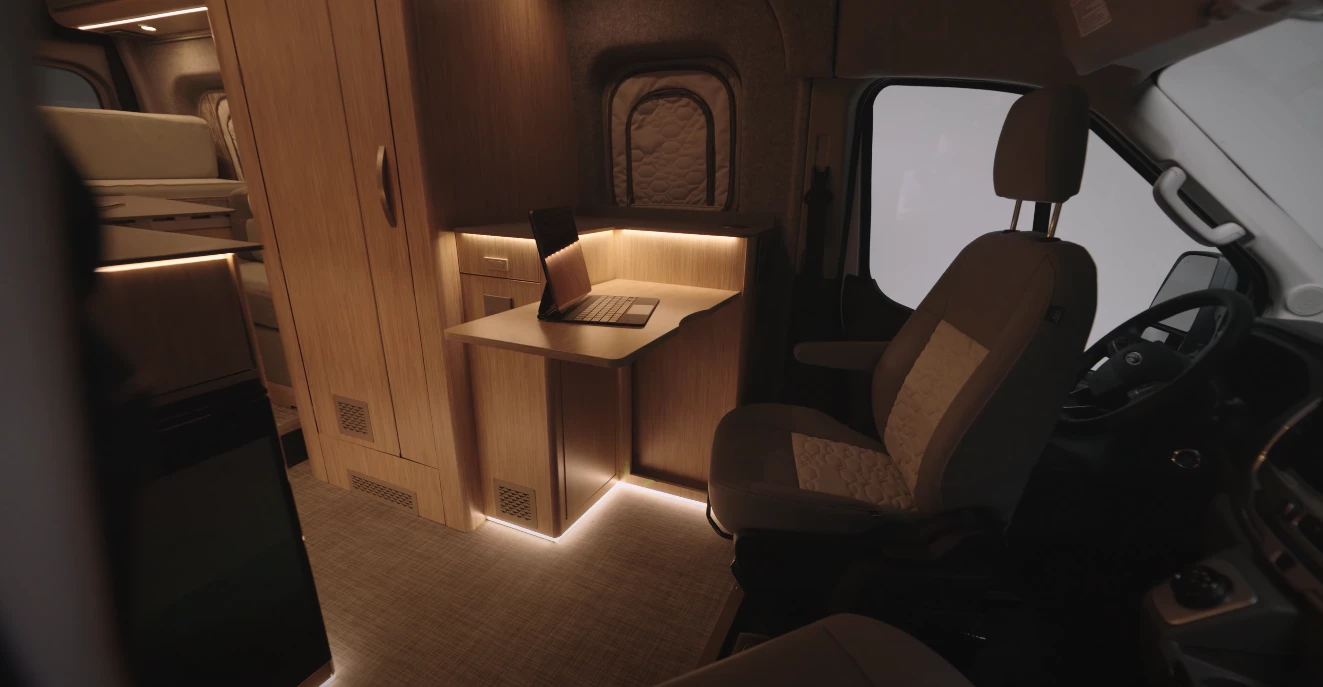
While Winnebago posted an announcement ahead of tomorrow's debut, it did not release photos or additional interior details. We'll update with new information and materials after the full debut on Wednesday. Winnebago will be even be offering test rides at the Tampa show.
Update 1/18/23: We've added a full photo gallery with exterior and interior photos. Winnebago also released an eRV2 intro video to better define its "#eVanlife" vision.
Source: Winnebago
